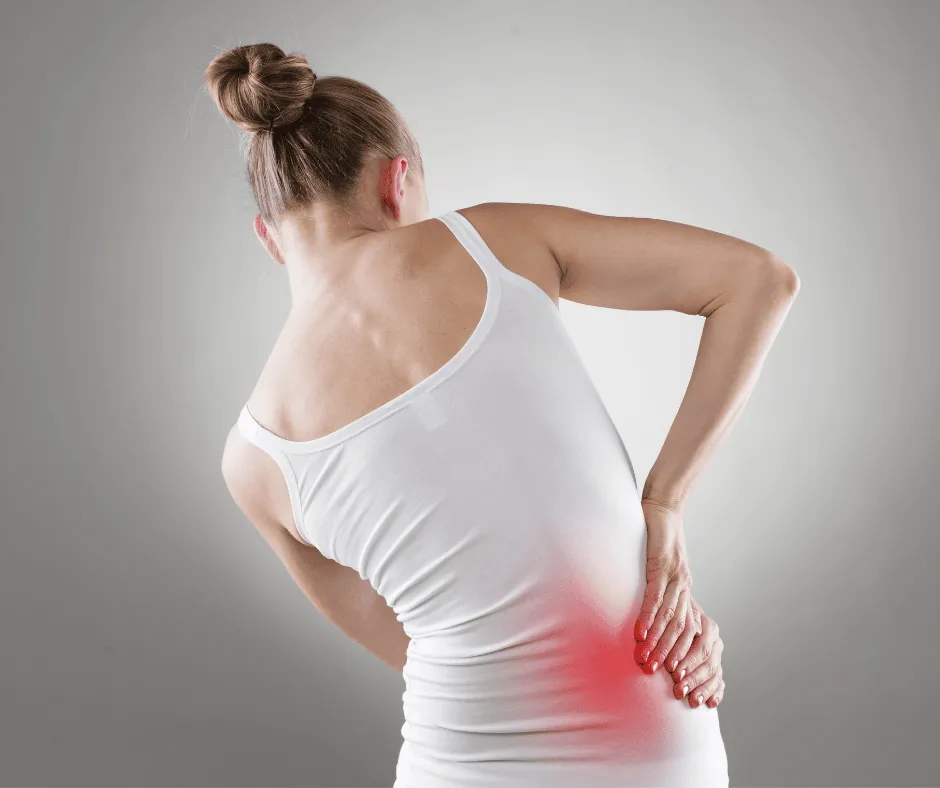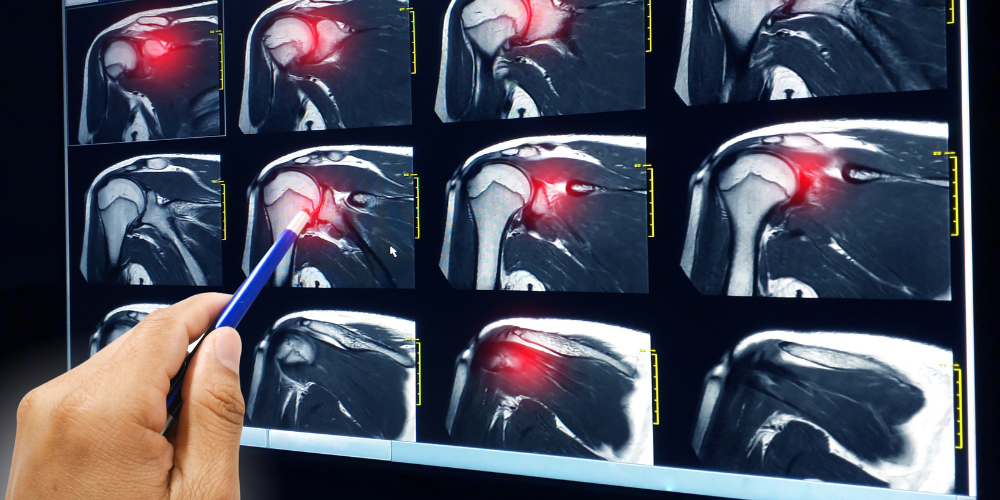Hip Pain Relief
Rediscover a Life Untroubled by Hip Pain
Diagnosing hip discomfort can be complex due to the joint's multifaceted connection to bones, muscles, ligaments, and other tissues. Pain in the groin or inner hip may signal an issue within the hip, while discomfort in the upper thigh, outer buttock, or hip's outer area often implicates surrounding soft tissues. Sometimes, what appears as hip pain may actually originate from elsewhere, like the lower back.
At PhysioFit, we're dedicated to providing specialized hip pain solutions, individually tailored to meet the unique needs and conditions of each patient. We apply a scientific, fitness-oriented approach to physical therapy, focusing on personalized care paths towards relief. Our mission goes beyond just easing your hip pain; we aim to improve your overall well-being, mitigate the risk of persistent or long-lasting discomfort, and facilitate a quick recovery to your regular activities.
What You Should Know
The hip, a sturdy ball-and-socket joint, enables a wide range of movement. The ball, at the top of your thigh bone, fits neatly into a hollow socket in your pelvis, contributing to the joint's impressive mobility.
A network of muscles and tendons encase the hip joint, forming a protective capsule. This support system bolsters joint movement and contributes to leg and upper body motion.
The synovium within the capsule lubricates the joint with synovial fluid and sustains the cartilage health. This cartilage buffers the hip joint bones, minimizing friction and impact during motion. This well-structured support mitigates hip dislocation, even during high-impact injury scenarios.
A proper diagnosis of a hip problem involves a thorough evaluation from a professional.

What Really Causes Hip Pain?
The cause of hip pain can vary considerably, stemming from various injuries or health conditions. The nature and severity of the pain often offers clues to its underlying cause.
Tendonitis - Inflamed Tendons: The most frequently encountered source of acute hip pain is inflamed tendons, known as tendonitis. This inflammation generally results from excessive physical activity and while it can be quite painful, it typically subsides within a few days.
Arthritis - A Persistent Pain Culprit: Long-term hip pain is predominantly caused by arthritis, a condition characterized by painful, stiff, and tender joints that can impede normal mobility. Several forms of arthritis can affect the hip:
Osteoarthritis (OA): The wearing down of protective joint cartilage due to age or use often results in osteoarthritis.
Traumatic Arthritis: A joint injury, like a fracture, may trigger this condition, which mirrors osteoarthritis.
Infectious Arthritis: This occurs when an infection in the joint leads to cartilage destruction.
Rheumatoid Arthritis (RA): This autoimmune condition, where the body's immune system attacks the joints, may cause extensive damage to joint cartilage and bones over time.
Of these, osteoarthritis is far more prevalent than rheumatoid arthritis.
Trochanteric Bursitis - Inflammation Near the Hip Joint: Hip pain may also be attributed to trochanteric bursitis, a condition that arises when the bursa, a fluid-filled sac near the hip joint, becomes inflamed. This inflammation can be triggered by hip injury, joint overuse, or postural issues. Moreover, other conditions such as RA can also lead to hip pain, with women being more prone to this condition.
Hip Fractures - Sudden, Severe Hip Pain: Hip fractures, often seen in older adults or individuals suffering from osteoporosis (a condition that weakens bones), present as sudden, intense hip pain. They necessitate immediate medical attention due to potential complications, such as leg blood clots.
A hip fracture usually demands surgical intervention followed by physical therapy to aid recovery and restore normal mobility.
If any of this information resonates with your current situation, we urge you to schedule an appointment with us immediately. Don't let hip pain diminish your life quality - allow us to help you embark on the path to relief today.
Safeguarding Your Hips: Essential Tips to Prevent a Hip Injury
Your hip, a critical joint supporting your body weight during movements, requires utmost care for a pain-free life. By adopting certain habits, you can reduce wear and tear, minimize osteoarthritis risk - a leading cause of hip replacement - and uphold a high-quality life. Here are concise yet insightful tips to keep your hips injury-free:
Healthy Weight Maintenance: It's vital to maintain a weight within a healthy range. The hip bears forces up to 3-6 times body weight, meaning reduced weight equals less pain. Balance regular exercise with a nutritious diet to keep joints healthy.
Good Posture: Your everyday posture significantly impacts your joints. Develop habits like sitting with straight back, feet flat, legs uncrossed, and evenly distributing weight while standing to minimize stress on your hip joints.
Sleep Posture: Optimize your sleeping position to alleviate joint stress. If you're a side sleeper, try using pillows between knees or under your hip for support. Back sleepers should put a pillow under the knees for better spine alignment.
Comfortable Footwear: Wear shoes with proper cushioning and arch support to absorb shocks and reduce joint strain. Seek advice from footwear experts if in doubt.
Proper Warm-Up and Stretching: Prioritize warming up before exercise and stretching afterwards to boost blood flow and flexibility, reducing hip injury risk.
Resistance Training: Add functional resistance exercises like squats, lunges, and step-ups to your routine twice or thrice a week to enhance hip and leg muscle strength, promoting hip stability and reducing osteoarthritis risk.
Modify Exercises: Adapt your workout regime as you age. Vary activities to avoid repetitive injuries and consider isometric exercises if regular movements cause pain. Listen to your body and adjust accordingly.
By integrating these tips into your lifestyle, you're more likely to maintain healthy hips and avoid surgical interventions.

Common Symptoms of Hip Pain
Presence of inflammation or a reddish hue in your hip
Discomfort in your groin, buttocks, or thigh area
Sensing rigidity when mobilizing your hip
Challenges in maneuvering your hip
Experiencing intense pain radiating down one side of your body (from the buttock extending down the leg)
Experiencing a clicking, snatching, popping, or scraping feeling in your hip
Remember, if you resonate with any of the symptoms or conditions mentioned, we highly recommend making an appointment with us for a thorough evaluation and personalized treatment plan.
Please Note: The information provided on our website is intended for general education and is not a substitute for professional medical advice. Each individual's situation and body is different. Therefore, what may work for one person may not work for another. We care about your well-being and advise you to reach out to us to discuss your specific needs before implementing any advice from our website.
Your Source for All Things Physical Therapy in Bend Oregon
The PhysioBlog

Shoulder Pain Relief: Physical Therapy Provides Options for Avoiding Rotator Cuff Injuries
Understanding Shoulder Pain and Rotator Cuff Injuries
Please Note: The information provided on our website is intended for general education and is not a substitute for professional medical advice. Each individual's situation and body are different. Therefore, what may work for one person may not work for another. We care about your well-being and advise you to reach out to us to discuss your specific needs before implementing any advice from our website.
Introduction
Shoulder pain is a common complaint that can stem from various causes, one of the most prevalent being rotator cuff injuries. These injuries can significantly impact a person's quality of life, making daily tasks challenging and limiting physical activities. In Bend Oregon, the PhysioFIT physical therapy clinic is dedicated to helping individuals manage shoulder pain and prevent rotator cuff injuries through our “fitness-centric” physical therapy approach.
Understanding Shoulder Pain
Shoulder pain can arise from various conditions, including arthritis, bursitis, and tendonitis. However, one of the most common sources of shoulder pain is overuse or some trauma leading to a rotator cuff injury. The rotator cuff is a group of muscles that stabilize the shoulder joint by maintaining proper congruence and motion between the scapula and humerus. When these tissues are damaged, it can result in severe pain, weakness, and limited mobility.
According to Healthline, shoulder pain affects millions of Americans each year, with rotator cuff injuries accounting for a significant portion of these cases. These injuries can severely impact an individual's ability to perform daily activities and maintain an active lifestyle.

What are Rotator Cuff Injuries?
Rotator cuff injuries typically involve damage to the tendons, which can occur due to acute trauma, such as a fall, or chronic wear and tear, often resulting from repetitive overhead motions.
According to the Mayo Clinic, rotator cuff injuries are common and increase with age. These injuries can cause a dull ache in the shoulder, disturb sleep, and make it difficult to perform activities that involve lifting the arm.
At PhysioFIT, we frequently treat patients with rotator cuff injuries providing pain relief as soon as possible. Our team of physical therapists uses a variety of techniques to alleviate pain, improve mobility, and strengthen the shoulder muscles to prevent further injury.
The Role of Physical Therapy in Shoulder Health
Physical therapy plays a crucial role in managing shoulder pain and preventing rotator cuff injuries. Physical therapists can provide personalized treatment plans that include pain management strategies, strengthening exercises, and education on how to avoid or improve the mechanics of movements that are associated with injury. It’s important to get a proper evaluation from a professional, so as not to further aggravate any potential injury that may be present.
At PhysioFIT, our physical therapists are experts in shoulder health and we don't want to prevent you from enjoying all that Central Oregon has to offer any longer than you have to. So we work closely with our patients to understand their specific needs and goals, and we develop customized treatment plans that aim to alleviate pain, improve function, and prevent future injuries. Our approach to treatment is holistic with a "fitness-centric" approach, considering the overall health and well-being of our patients in addition to their shoulder health.
Through physical therapy, individuals suffering from shoulder pain can gain relief and learn strategies to prevent future injuries. At our physical therapy clinic we are committed to helping our patients achieve optimal shoulder health and an improved quality of life. We won’t just mask the symptoms or put you through the motions, we want you back in action as soon as possible, equipt with the tools to prevent further injuries in the future.
Shoulder Pain and Rotator Cuff Injury Prevention
Prevalence of Rotator Cuff Injuries
Rotator cuff injuries are a common cause of shoulder pain and disability among adults. In fact, almost 2 million people in the United States visit their doctors each year due to rotator cuff injuries. These injuries can significantly weaken your shoulder, making many daily activities, like combing your hair or getting dressed, painful and difficult to do.
Rotator cuff injuries are more common in the dominant arm — the arm you prefer to use for most tasks. If you have a degenerative tear in one shoulder, there is a greater likelihood of a rotator cuff tear in the opposite shoulder — even if you have no pain in that shoulder.

Symptoms and Diagnosis of Rotator Cuff Injuries
The most common symptoms of a rotator cuff tear include:
Pain at rest and at night, particularly if lying on the affected shoulder
Pain when lifting and lowering your arm or with specific movements
Weakness when lifting or rotating your arm
Crepitus, or a crackling sensation, when moving your shoulder in certain positions
Tears that happen suddenly, such as from a fall, usually cause intense pain. There may be a snapping sensation and immediate weakness in your upper arm. Tears that develop slowly due to overuse may also cause pain and arm weakness. You may have pain in the shoulder when you lift your arm, or pain that moves down your arm.
To diagnose a rotator cuff injury, your doctor should discuss your symptoms and medical history, then examine your shoulder. They may also examine your neck to make sure that it is not the true source of your pain, and to rule out other conditions.
Imaging tests, such as X-rays or magnetic resonance imaging (MRI), may be used to confirm the diagnosis. An MRI can show the rotator cuff tear, as well as where the tear is located within the tendon and the size of the tear.
Treatment Options for Rotator Cuff Injuries
The goal of any treatment is to reduce pain and restore function, we can do this in a multitude of ways, including manual therapy. There are several treatment options for a rotator cuff tear, and the best option is different for every person. In planning your treatment, your doctor or health professional like a physical therapist will consider your age, your activity level, your general health, the type of tear you have, as well as functional impairments.
Nonsurgical treatment options may include rest, activity modification, nonsteroidal anti-inflammatory drugs (NSAIDs), strengthening exercises and physical therapy, and steroid injections.
Physical therapy, such as the services provided by PhysioFIT, a leading provider of physical therapy in Bend, Oregon, can be particularly beneficial. Specific exercises can restore movement and strengthen your shoulder, relieving pain and preventing further injury.
In some cases, surgery may be recommended, particularly if your pain and function does not improve with nonsurgical methods or if you are very active and use your arms for overhead work or sports.
Preventing Rotator Cuff Injuries
Preventing rotator cuff injuries involves maintaining shoulder health and strength. This can be achieved through physical therapy techniques and proper warm-up before physical activities.
Physical therapy, such as the services we provide at PhysioFIT, can help to promote function, mobility, and range of motion, reducing the risk of rotator cuff injuries. Regular shoulder exercises can improve flexibility and endurance, further reducing the risk of injury.
Conclusion
Rotator cuff injuries are a common cause of shoulder pain and can significantly impact daily life. However, with the right treatment and preventive measures, it's possible to manage the pain and prevent further injuries. Physical therapy, in particular, plays a crucial role in both treatment and prevention.
At PhysioFIT, we are committed to helping our clients optimize their shoulder health and prevent rotator cuff injuries. Our team of experienced physical therapists in Bend, Oregon, provide personalized treatment plans tailored to each individual's needs. We believe that it's easier to stay healthy than regain lost capacity post-injury, and we're here to guide you every step of the way.
Remember, it's important to not just seek medical advice or physical therapy care if you're experiencing shoulder pain or suspect a rotator cuff injury. Prevention or early treatment can prevent your symptoms from getting worse,get you back to your normal routine quicker, or even prevent the injury from occurring in the first place.
Please Note: It's important to note that any exercises that are shared should be performed under the guidance of a qualified physical therapist in bend to ensure correct technique and to prevent injuries. A physical therapist can provide a customized exercise program based on the individual's fitness level, goals, and any existing injuries or conditions. If you’d like to explore this more or would like to schedule a time with a physical therapist, contact us atPhysioFITBend.com
Copyright PhysioFIT 2025 . All rights reserved


